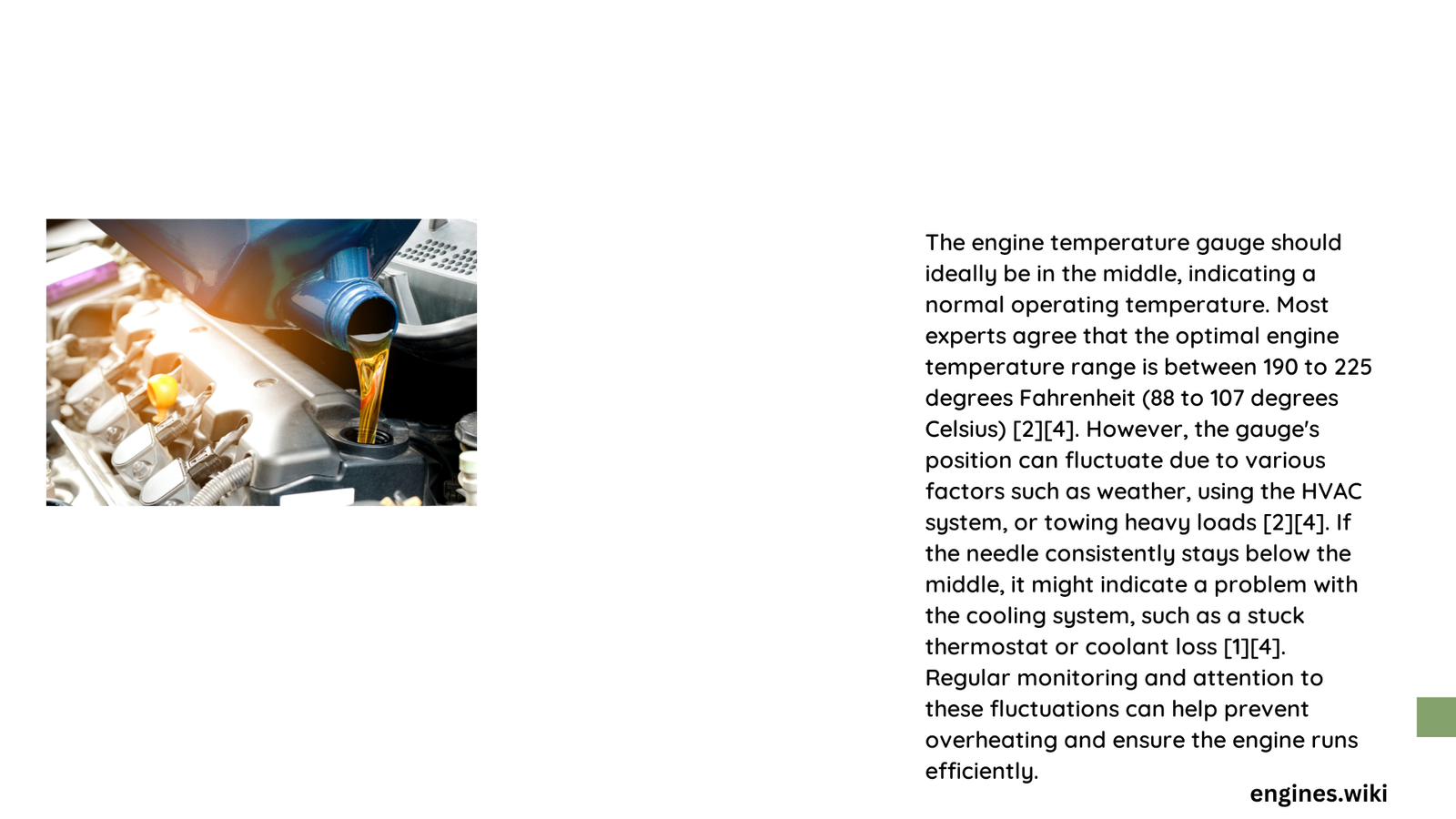Should Engine Temp Be in the Middle: Understanding Vehicle Engine Temperature Dynamics
Vehicle engines are complex machines that require precise temperature management. The critical question for many drivers is whether the engine temperature should consistently remain in the middle of the temperature gauge. Understanding the nuanced relationship between engine temperature, performance, and potential risks is essential for maintaining your vehicle’s longevity and efficiency.
What Is the Ideal Engine Temperature Range?
Most modern vehicles operate optimally within a specific temperature range:
| Temperature Range | Vehicle Type | Performance Characteristics |
|---|---|---|
| 195°F – 220°F | Modern Vehicles | Peak Efficiency |
| 180°F – 195°F | Older Vehicles | Conservative Operation |
| 220°F – 235°F | High-Performance Engines | Maximum Power Output |
Why Temperature Matters
Engine temperature isn’t just a number—it’s a critical indicator of your vehicle’s health. Too low, and your engine experiences increased wear; too high, and you risk catastrophic damage.
How Does Engine Temperature Affect Performance?
- Fuel Efficiency
- Optimal temperature ensures complete fuel combustion
- Reduces unnecessary fuel consumption
-
Minimizes carbon buildup
-
Engine Component Protection
- Prevents premature wear of moving parts
- Maintains proper lubrication
- Reduces friction-related damage
What Causes Temperature Fluctuations?
Several factors influence engine temperature:
- Ambient environmental conditions
- Driving style and speed
- Vehicle age and maintenance
- Cooling system functionality
- Engine design and configuration
Signs of Temperature-Related Issues
Warning Indicators:
– Persistent temperature gauge readings outside normal range
– Steam from engine compartment
– Unusual engine noises
– Reduced performance
– Coolant leaks
Practical Recommendations
When to Be Concerned
| Temperature Indication | Action Required |
|---|---|
| Below 180°F | Check thermostat |
| Above 220°F | Immediate inspection needed |
| Rapid fluctuations | Diagnose cooling system |
Expert Tips for Maintaining Optimal Temperature
- Regular coolant system maintenance
- Use manufacturer-recommended coolant
- Check radiator and cooling fans
- Monitor temperature gauge during driving
- Address warning signs promptly
Technical Insights
While the temperature gauge doesn’t always need to be precisely in the middle, it should remain within the manufacturer’s recommended range. Modern vehicles have sophisticated cooling systems that dynamically manage temperature.
Conclusion
The notion that engine temperature must be exactly in the middle is a misconception. What matters is maintaining a consistent temperature within the optimal range specific to your vehicle.
Pro Maintenance Advice
- Schedule regular cooling system inspections
- Use high-quality coolant
- Replace coolant according to manufacturer recommendations
- Address temperature anomalies immediately
Reference:
- SAE International Thermal Management Guidelines
- ASE Automotive Cooling System Standards
- EPA Vehicle Efficiency Resources
Note: Always consult your vehicle’s manual and a professional mechanic for specific guidance tailored to your vehicle model.

